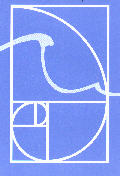| . . . . |  |
|
| ON THE FOLLY OF MISTAKING | ||
| CULTURE FOR INSTRUCTIONS |
| . . . . |  |
|
| ON THE FOLLY OF MISTAKING | ||
| CULTURE FOR INSTRUCTIONS |
IT WAS
USUAL
for the packaging operators in a certain plant to work without
written
instructions as they placed their product in cartons for shipment.
Folklore had sustained
this process for years. But, one fateful
night, an operator started packing the product
the other way up. The change seemed innocent enough at the
time: It didn’t seem to
make any difference which way up the product sat in the cartons.
It would fit just fine.
The innovative operator informed the other personnel that there
was now a new way to
pack the product.
THE
QUALITY INSPECTORS, whose mandate was to inspect the product
100%, were
told the Same thing
and gave
their blessing to the new culture. The inspectors were also
working without written
procedures. The new “instructions” soon became
routine for all
five shifts.
THREE
WEEKS PASSED without event. Then a call came in
from the company’s large,
multinational customer. Their receiving inspection had
detected an inexplicable problem
which was suddenly rendering the product useless. After a Q.A.
engineer visited the
customer site, the truth slowly emerged that the problem
condition was the result of
packing the product upside-down for shipment. The large,
multinational customer
promptly returned three-plus weeks’ worth of product,
which swamped the supplier’s
warehouse and stayed on the books for many months.
I have worked for several organizations whose management pleaded
with me not to
write process documents for manufacturing jobs. In these
environments the manufac-
turing processes were entrusted to folklore, to verbal
transmission from one operator
to the next over a period of years. What the manufacturing
managers said to me was,
“If you write it down, then we can’t change it.”
My response was that the precise reason
for writing instructions was to gain control of change: to
permit purposeful change and
to prevent undesired changes. To keep manufacturing
instructions in the realm of folklore
is to confuse the uses of CULTURE and INSTRUCTION.
INSTRUCTION: Written
instructions are the software which runs on the hardware of
manufacturing operations. It accomplishes specific tasks,
and it can be revised swiftly
to accommodate changes in specification, equipment, or personnel.
Its written nature
makes it an effective training tool. Written instructions
can communicate a great deal
of detail and keep it available for instant reference.
Written instructions almost always
direct certain people as they perform specific
jobs.
CULTURE: Consists of the
beliefs and deep programming of the organization and its
citizens. If a company is said to have soul, that soul
resides in the culture. The culture
is understood to apply to all employees. Cultural elements
may be written, verbal, or
simply understood by all. Culture provides general guidance
rather than detailed directions.
Examples of written culture include corporate statements of
purpose, quality policies,
and environmental policies. Desirable unwritten culture
might take the form of general
respect for quality, or environmental responsibility, or easy
access to management. Equally
cultural, although undesirable, is the animosity which often
separates “management” from
“workers”, or harassment based on race or gender.
Once an element has been added to a culture, it is all but
impossible to change or eradicate
it. Changing a corporate culture has been likened to asking
several hundred people at once
to adhere to a strict diet. Culture is literally a life-and-death
matter for any company.
Additions to
culture should be made with great care and with a clear purpose
in mind.
......USE
CULTURE FOR LARGE, GENERAL, PERMANENT DIRECTIVES. |
......USE INSTRUCTIONS TO ACCOMPLISH SPECIFIC TASKS. |
January 22, 1999